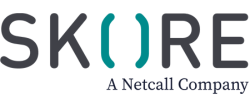The democratization of process and successful change
The democratization of process
Our focus was always to improve communication between diverse groups within any organization to drive successful change. Skore was intended to be easily accessible to any audience, quick to get going and easy to use. We designed it to help clarify complex situations and make them easier to understand. Anyone, regardless of their area of expertise, can use Skore in this way.
While discussing this with a peer recently he commented that Skore is facilitating “the democratization of process”. It sounds pretty grand but he pointed out we were making process accessible. It was no longer about comprehensive documentation, that is rarely used, but a dynamic view of the organization today. Anyone in any organization can describe how things work using a simple common approach. And as such everyone has the ability to easily describe and share business problems and their solutions.
Successful change
I had this in mind while reading this article from McKinsey. The authors argue that successful change is about ‘Change Platforms’ rather than ‘Change Programs’. From my own personal experience in Business Transformation programs I’d have to agree with a lot of it. The front line, the people most impacted by a change, almost always hold the best insight into whether it will work or not and what needs to be done. Without early involvement from the front line it will be as hard as hell to make any change stick, let alone result in successful change.
What the article describes as a solution is not unlike how most small companies tend to operate these days. They have no perfectly defined vision or end state. Instead they head in a certain direction, learn as they go and change course according to what works well. But the key to making an approach like this work within a large enterprise is bottom up engagement.
Making sense of chaos
The problem is when a change is necessary the front line can feel, well a little chaotic. It’s hard to know what to focus on and hard to know exactly what is broken or where change should be made. There needs to be a general agreement between members of the team about what’s broken and what needs fixed right now.
In this sort of situation comprehensive documentation is no use. By the time an accurate model had been built things will have changed whether the team intended it or not. What they need is a rapid way to get to grips with what’s happening right now and make a decision on what to do next.
If members of the team were able to quickly capture a simple view of how they perceived things worked around them, they could quickly compare that with colleagues. The convergence, or divergence, of these views would very quickly start to highlight problem areas and even suggest solutions.
Creating a change platform is essential but simply adding more communication channels is only part of the solution. The front line need a simple way to make sense of what’s going around them and articulate their ideas to the rest of the team.
Use Skore to rapidly capture processes in live workshops in a way that engages everyone in the team. You’ll get the answer faster with more people on board.
